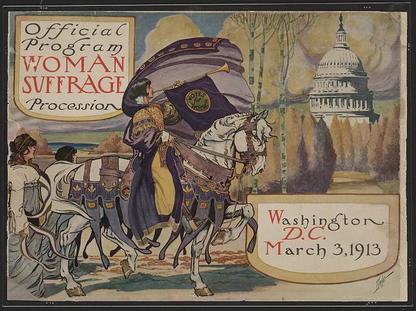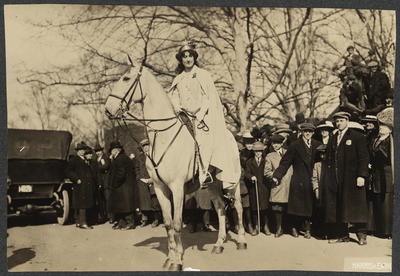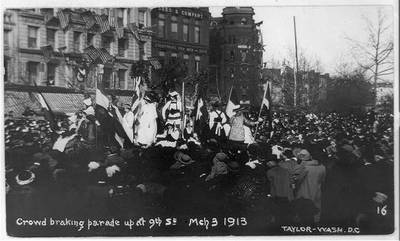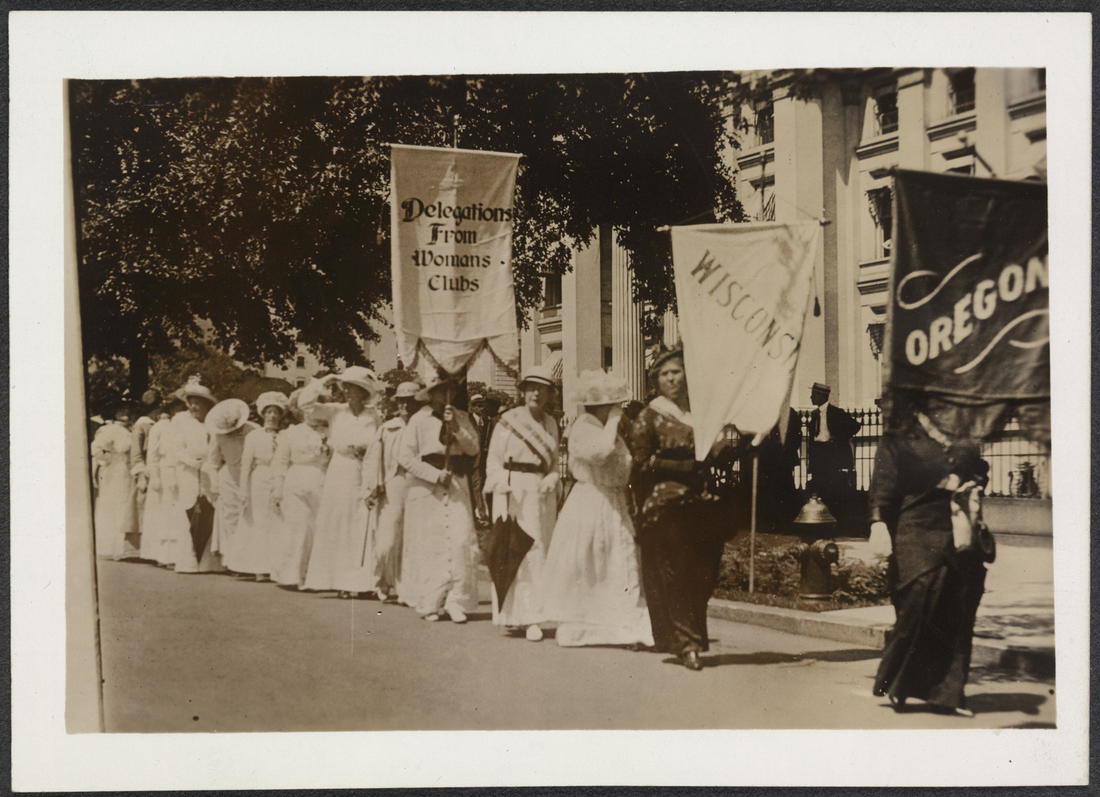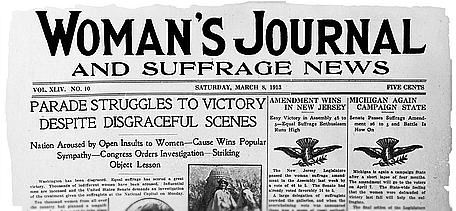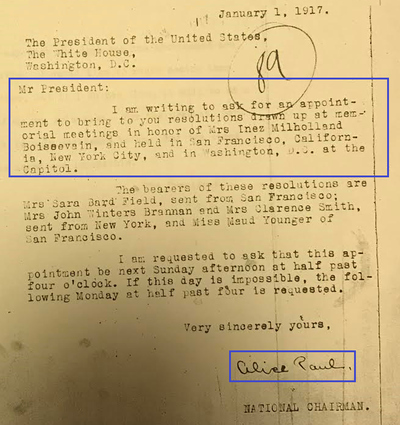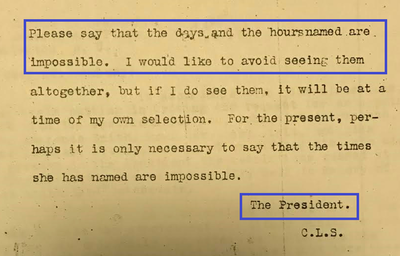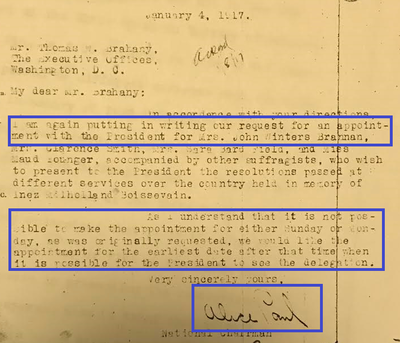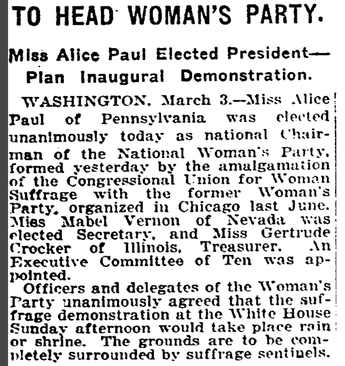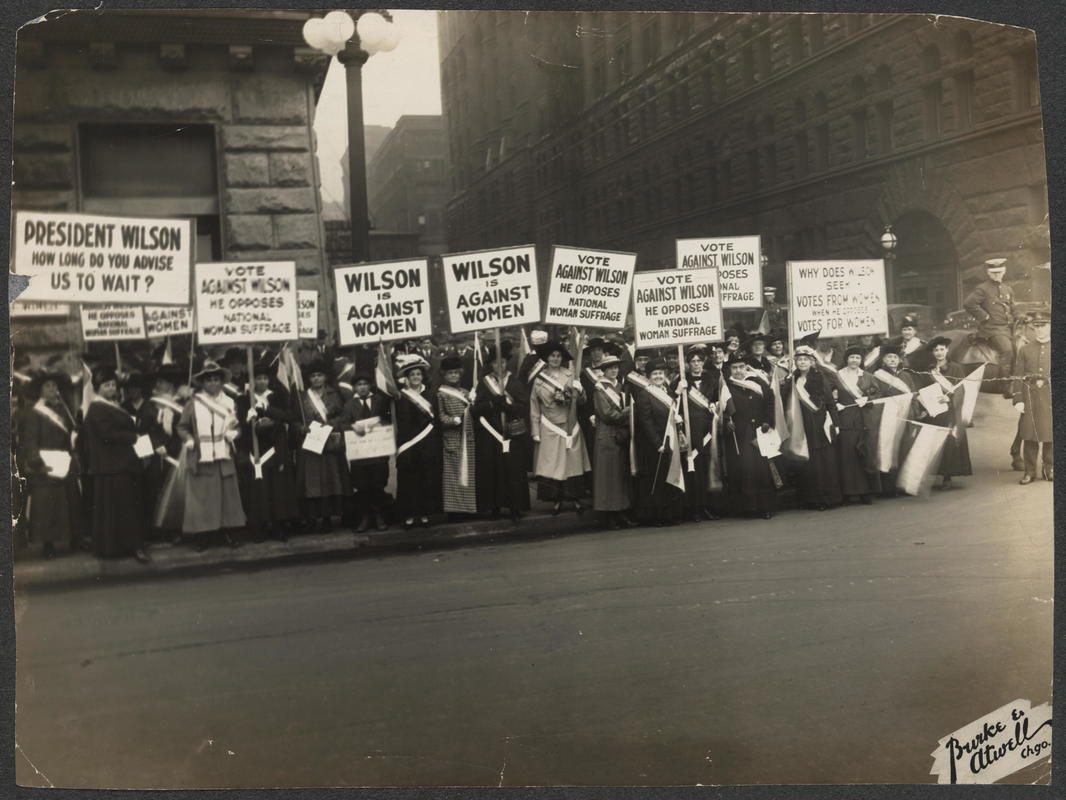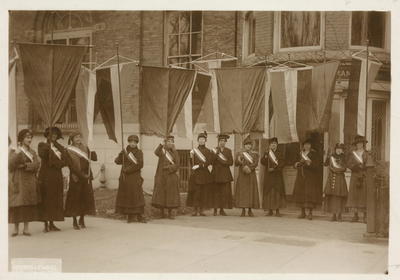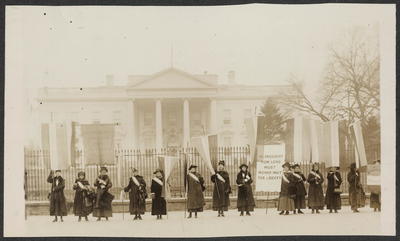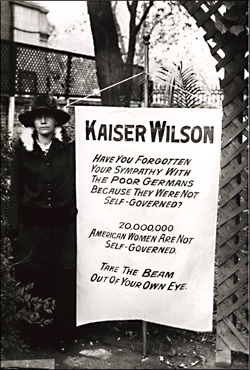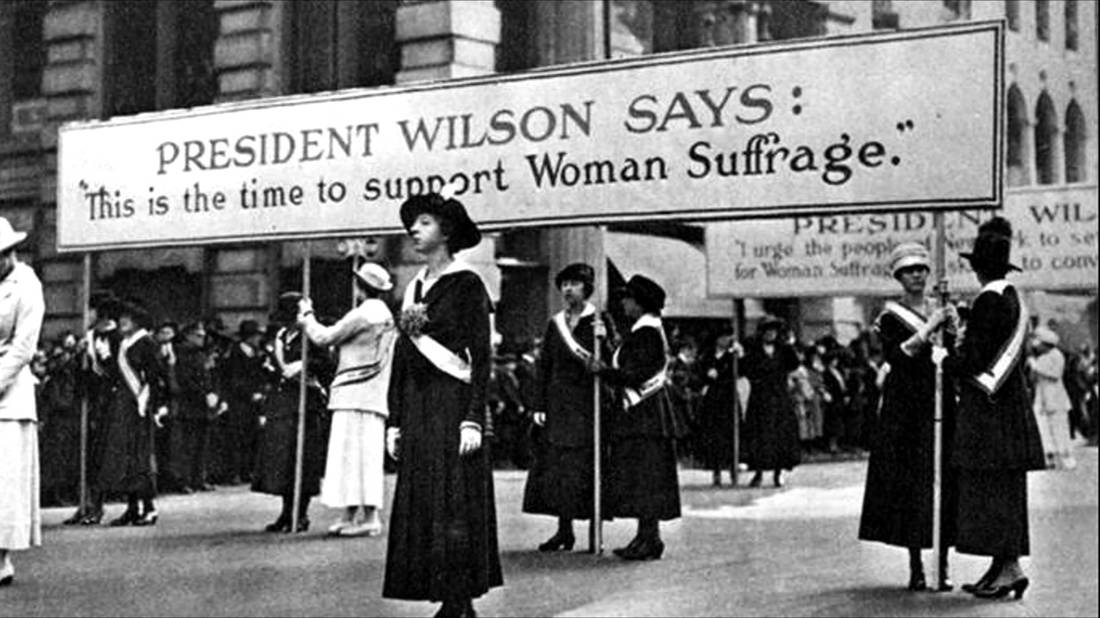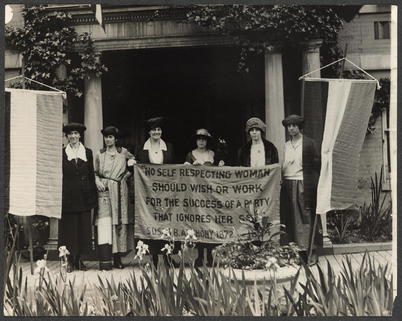Chairman of the Congressional Committee
Alice was appointed the chairman of the NAWSA's Congressional Committee in 1912.
"Alice Paul [is] appointed chairman of NAWSA’s Congressional Committee at NAWSA convention... NAWSA considers federal action so unimportant it budgets only $10 annually in 1912 to Congressional Committee. Paul [is] told she needs to raise own funds"
-Detailed Chronology: National Woman's Party History
|
While serving in this position, Alice organized the first national women's march. It took place on March 3rd, 1913, the day before President Woodrow Wilson's first inauguration.
"'Where are the people?' [Woodrow Wilson] asked. He had expected to be greeted at the station by a large crowd of supporters. 'On the avenue watching the suffragists parade,' came the reply" |
Click on pictures to enlarge and see captions.
"The marchers came from all over the country at their own expense. We just sent letters everywhere, to every name we could find" |
This parade proved to be a stroke of genius and garnered national attention.
"Men threw insults at the women, physically attacked them, blocked their way... Across the nation people were shocked and outraged at the idea of thousands of women being manhandled by irresponsible crowds because of police indifference. The events of the day nearly overshadowed the inauguration" |
During this time, Alice also organized the first deputation of women to ask a president for support on a national suffrage amendment. However, as shown through the letters exchanged between Alice and the president, Mr. Wilson was often reluctant to meet with the suffragists.
Click on pictures to enlarge and see captions.
"A few weeks after Mr. Wilson became President, four of us went to see him. And the President, of course, was polite and as much of a gentleman as he always was... He said that he thought this was the way suffrage should come, through state referendums, not through Congress. That’s all we accomplished. We said we were going to try and get it through Congress, that we would like to have his help and needed his support very much. And then we sent him another delegation and another and another and another and another and another and another—every type of women’s group we could get. We did this until 1917, when the war started and the President said he couldn’t see any more delegations"
-Alice Paul
President of the National Woman's Party (NWP)
"For the youthful Alice Paul [the parade] was a significant step in rejuvenating the cause of woman suffrage in America. Through it she succeeded in establishing an identity for herself and her little band of followers. She used the Washington spectacular as a starting point for other action-oriented techniques which differed dramatically from the more traditional approaches of the National American Woman Suffrage Association"
- Sidney R. Bland, author of "New Life in an Old Movement: Alice Paul and the Great Suffrage Parade of 1913 in Washington, D. C."
Differences in opinion eventually caused the Congressional Union to secede from the NAWSA. Eventually, the National Woman's Party (NWP) was created.
"Forward Out of Darkness, Forward into Light"
-Official slogan of the NWP
"[The President of the NAWSA] feared that [suffrage] would be stigmatized by violence, so she disavowed Paul's actions. A break was inevitable. The Congressional Union withdrew from the NAWSA and, in 1916, formed its own separate organization, the National Woman's Party (NWP), under Paul's leadership" |
The NWP was extremely different from any suffrage organization that America had seen before. These women were very assertive, and they went against many societal norms to get their message across.
|
Suffragists directly protested against President Wilson.
"Well, in 1916, when we were trying to prevent the re-election of Woodrow Wilson, we sent speakers to all the suffrage states, asking people not to vote for Wilson, because he was opposing the suffrage which they already had" |
The NWP became the first group to ever picket the White House on January 10th, 1917, which was something that the NAWSA had always been reluctant to do.
Click on pictures to enlarge and see captions.
In total, 168 women went to jail for picketing. Many of them went on hunger strikes in order to be released, which garnered national publicity.
"The picketers began to be arrested on the trumped up charge of 'obstructing traffic,' and were jailed when they refused to pay the imposed fine. Despite the danger of bodily harm and imprisonment, the suffragists continued their demonstrations for freedom unabated"
-"Who Was Alice Paul?", Alice Paul Institute
Suffragists did not give up, even after being put in jail. They demanded to be treated as "political prisoners". To protest their imprisonment, women also participated in hunger strikes while in jail. They were sometimes brutally force-fed by government officials, which actually increased publicity and support for the women.
As their protest became more aggressive, women faced heavy backlash.
"Woman's Party pickets continued to carry banners to the White House throughout August. When on August 14 pickets unfurled a banner addressing 'KAISER WILSON,' an angry mob of sailors and government workers attacked the suffragists. Rioting continued the next day; the Woman's Party headquarters was vandalized, with several pickets injured and over $1,000 in damages incurred. Police made no effort to halt the riots or to apprehend the members of the mob" |
After months of protests, President Wilson finally agreed to publicly support the suffrage amendment.
"No one can doubt [that] Alice Paul's tactics placed Wilson in an untenable position. The president, in order to maintain at least the appearance of integrity and consistency, made a political rather than a principled decision to support the woman suffrage amendment"
-Sally Hunter Graham, author of "Woodrow Wilson, Alice Paul, and the Woman Suffrage Movement"
Time and time again, Alice proved her assertiveness through her upfront and persistent protests. From parades to picketing, Alice was not only able to gain national publicity for the movement, but also make it impossible for the government to ignore women's suffrage for any longer.
Proudly powered by Weebly
